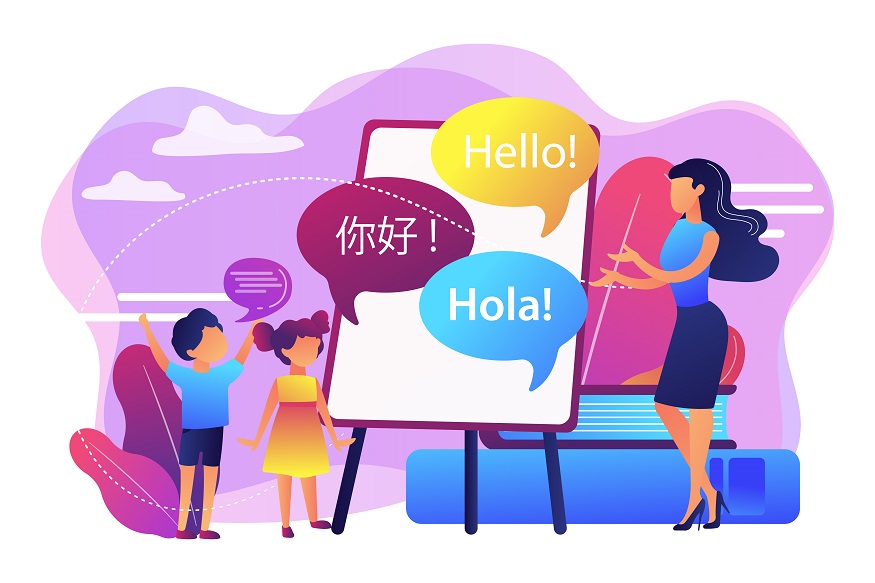Physical Address
304 North Cardinal St.
Dorchester Center, MA 02124
Physical Address
304 North Cardinal St.
Dorchester Center, MA 02124

Bilingual learning reshapes how young minds think
Bilingual education has long been a subject of discussion among educators, parents, and researchers. While some focus on its cultural and social benefits, others are uncovering the profound ways in which it influences the brain. Learning in two languages does more than expand vocabulary—it changes how children think, analyze, and process incoming information. By exploring the cognitive effects of bilingualism, we gain a deeper understanding of how language can shape the way young minds interact with the world.
When children are exposed to two languages early in life, their brains adapt to constantly switching between linguistic systems. This mental exercise strengthens their ability to approach problems from multiple perspectives, since they are used to translating ideas and navigating different grammatical structures. In essence, bilingual thinking naturally fosters flexibility.
More importantly, dual-language learners develop heightened sensitivity to context. They quickly learn that meaning is not just tied to words, but also to cultural nuances and situational use. This deeper appreciation of context enhances their interpersonal communication and makes them skilled at picking up subtle cues.
Another fascinating aspect is the way bilingual education encourages abstract thinking. Children often translate concepts rather than direct words, which prompts them to focus on ideas at a higher level. This process activates broader neural networks and strengthens reasoning skills that carry over into other academic subjects.
Ultimately, learning in two languages rewires the brain for adaptability. Instead of staying locked into one mode of thought, children grow accustomed to switching gears—an ability that sets the foundation for lifelong intellectual agility.
Cognitive flexibility refers to the brain’s ability to shift between tasks, perspectives, or problem-solving strategies. Studies consistently show that bilingual children outperform their monolingual peers in tasks requiring this skill. The daily practice of choosing the correct language helps them develop a kind of mental "muscle memory" for switching efficiently between competing demands.
Beyond language, this flexibility impacts how children approach puzzles, math problems, and even social situations. They are more adept at considering multiple solutions and weighing alternatives before reaching conclusions. This flexible mindset can prove invaluable in fast-paced and dynamic environments as they grow older.
Bilingual education also strengthens inhibitory control—the ability to focus on relevant information while ignoring distractions. Since bilingual children must suppress one language while speaking another, this filtering mechanism sharpens their attention span and executive functioning skills. This advantage often translates into improved classroom performance overall.
In a world where adaptability proves more important than ever, cognitive flexibility helps children not just learn more effectively, but also thrive in diverse situations. Bilingual education provides them with daily training in this essential skill set.
Processing information efficiently requires more than memorization; it demands the ability to prioritize, integrate, and apply. Children in bilingual settings consistently show faster and more accurate processing because they are accustomed to decoding meaning across languages. This constant practice accelerates how quickly they retrieve information from memory.
One reason behind this sharper processing is the strengthening of executive control networks in the brain. Multilingual learners activate these brain regions more frequently, which makes processing both linguistic and non-linguistic tasks smoother over time. As a result, they become quicker decision-makers in a variety of contexts.
Additionally, multilingual environments keep the brain alert. When children navigate different languages depending on who they are speaking to, their minds continuously scan for context and adjust responses. This habitual attentiveness creates stronger cognitive pathways that naturally boost speed and accuracy.
Perhaps most importantly, sharper processing skills lead to greater confidence in problem-solving. When children trust their mental agility, they are more likely to take on challenges with persistence. This self-assurance underscores the long-term impact of bilingual education on personal growth and academic achievement.
Bilingual education does far more than equip children with language proficiency; it reshapes the way they think, learn, and interact with the world. By nurturing flexible thought patterns, sharpening focus, and enhancing information processing, it provides a cognitive framework that extends well beyond the classroom. As societies grow increasingly interconnected, the skills fostered through bilingual education are not just advantages—they are necessities. For parents and educators, investing in dual-language learning means investing in the resilience, creativity, and adaptability of future generations.